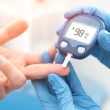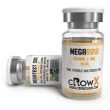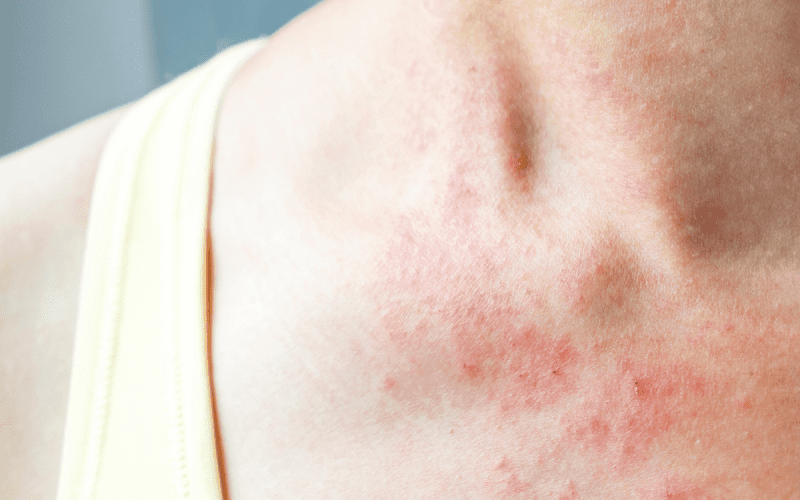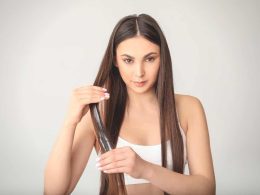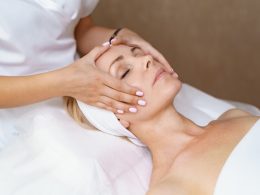Introduction
Your skin is a canvas of beauty, a reflection of your overall health and well-being. Yet, at times, it surprises us with unwelcome guests – red spots. These uninvited blemishes can appear out of nowhere, leaving you puzzled and anxious. In our quest to decode the enigma of red spots, we turn to Dr. Howard Murad, a pioneer in skincare renowned for his “Inclusive Health” approach. Dr. Murad believes that achieving healthy, radiant skin requires a holistic understanding, considering factors beyond external treatments. Join us as we delve into the top 10 reasons your skin may be reacting with red spots and discover how to demystify them.
Meet Dr. Howard Murad
Before we dive into the world of skin reactions and red spots, let’s acquaint ourselves with the expert who will guide us on this enlightening journey.
Dr. Howard Murad has revolutionized the field of skincare with his holistic approach. He asserts that healthy skin is a reflection of overall well-being, influenced by factors both inside and outside our bodies. Dr. Murad’s expertise has empowered countless individuals to achieve skin that not only looks good but also feels good.
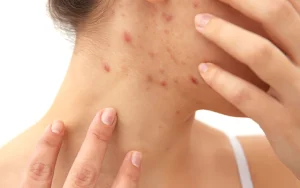
Understanding Red Spots
Let’s begin by understanding what red spots on the skin signify and the various forms they can take.
Red Spots: An Overview
Red spots are diverse and can manifest in various forms, including:
- Pimples or Acne: These are common culprits of red spots. Clogged pores, excess oil production, and bacterial activity can lead to inflammation and redness.
- Allergic Reactions: Allergies to skincare products, cosmetics, or even certain foods can trigger red spots and rashes on the skin.
- Skin Irritation: Overly aggressive skincare routines, excessive rubbing, or the use of abrasive products can irritate the skin, causing redness.
- Eczema and Psoriasis: Chronic skin conditions like eczema and psoriasis often result in red, inflamed patches on the skin.
- Heat Rash: Hot and humid weather can lead to heat rash, characterized by red spots and discomfort.
- Angiomas (Benign Blood Vessel Tumors): These typically harmless growths appear as small red spots due to the clustering of blood vessels.
- Hormonal Changes: Hormonal fluctuations, especially during menstruation or pregnancy, can cause red spots and acne.
- Infection: Bacterial, fungal, or viral infections can lead to skin inflammation and redness.
- Medications: Certain medications may have skin-related side effects, including red spots.
- Stress: Stress can exacerbate various skin conditions, leading to redness and irritation.
Now that we’ve identified the usual suspects, let’s explore the root causes of these red spots.
1. Acne and Breakouts
One of the most common causes of red spots is acne. Acne occurs when hair follicles become clogged with oil and dead skin cells. This environment is ideal for the growth of bacteria, leading to inflammation, and redness.
2. Allergic Reactions
Red spots can also be a sign of your skin’s reaction to allergens. Allergies to skincare products, cosmetics, or even certain foods can trigger redness and irritation. Identifying and avoiding the allergen is key to preventing these reactions.
3. Skin Irritation
Skin irritation often results from overly aggressive skincare routines or harsh products. Vigorous scrubbing, harsh exfoliants, or abrasive cleansers can strip away the skin’s natural protective barrier, causing redness.
4. Eczema and Psoriasis
Chronic skin conditions like eczema and psoriasis can lead to red, inflamed patches on the skin. These conditions are often hereditary and require careful management and treatment by a dermatologist.
5. Heat Rash
Heat rash, also known as prickly heat, occurs in hot and humid weather when sweat gets trapped in sweat ducts. This can cause red spots and discomfort, particularly in areas where sweat is trapped.
6. Angiomas (Benign Blood Vessel Tumors)
Angiomas, although typically harmless, can appear as small red spots due to the clustering of blood vessels beneath the skin’s surface. They may require removal if they become bothersome or for cosmetic reasons.
7. Hormonal Changes
Hormonal fluctuations can play a significant role in the appearance of red spots, especially for individuals with conditions like polycystic ovary syndrome (PCOS). Hormonal acne is a common manifestation of such imbalances.
8. Infection
Bacterial, fungal, or viral infections can lead to skin inflammation and redness. Prompt treatment with appropriate medications is crucial to resolve these issues.
9. Medications
Certain medications may have skin-related side effects, including red spots. It’s essential to discuss any unusual skin reactions with your healthcare provider if you suspect a medication is the cause.
10. Stress
Stress is a known trigger for various skin conditions. It can worsen existing skin issues or lead to new ones, resulting in red spots and flare-ups.
Dr. Murad’s Advice: The “Inclusive Health” Approach
Dr. Howard Murad advocates an “Inclusive Health” approach to skincare, which emphasizes the importance of addressing both internal and external factors for skin health.
Internal Factors:
- Balanced Diet: Maintain a diet rich in antioxidants, vitamins, and hydration. Nutrient-dense foods support overall skin function and health.
- Stress Management: Implement stress-reduction techniques such as mindfulness, meditation, exercise, and ensuring adequate sleep. Managing stress is crucial for maintaining clear and healthy skin.
- Hydration: Stay adequately hydrated. Proper hydration is essential for skin elasticity and overall function.
External Factors:
- Skincare Products: Use gentle skincare products suitable for your skin type. Avoid products that contain harsh chemicals, fragrances, or abrasive exfoliants.
- Hygiene: Practice proper skincare hygiene to prevent irritation. This includes gentle cleansing, patting the skin dry (rather than rubbing), and regular changing of pillowcases.
- Sun Protection: Protect your skin from UV damage by wearing sunscreen daily. UV rays can exacerbate redness and skin sensitivity.
Conclusion
Red spots on your skin may initially appear as a mystery, but with insights from Dr. Howard Murad, you are better equipped to understand and address them. Remember that achieving healthy, radiant skin involves a holistic approach that considers both internal and external factors.
As you embark on your journey to demystify red spots and reveal your skin’s natural beauty, let Dr. Murad’s “Inclusive Health” approach be your guiding light. Ultimately, the path to clear and healthy skin starts with understanding, self-care, and a commitment to overall well-being.




